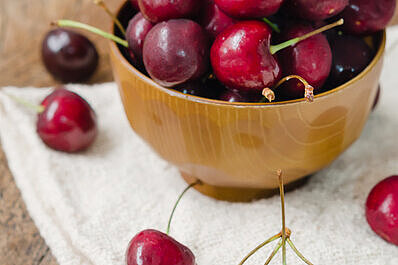Common fig

What is the common fig?
The common fig (Ficus carica) is a fruit that grows on the tree of the same name, which belongs to the mulberry family (Moraceae). Originally from the Middle East, the fig has spread around the world over the centuries and is now valued in many cultures for both its culinary and medicinal properties. Figs are known for their sweet taste and unique texture, which is created by the combination of soft flesh and crunchy seeds.
Benefits of the real fig in dog nutrition
Natural sweetness and energy
Figs provide a natural source of sugar and are rich in carbohydrates, making them an excellent source of energy for active dogs. They can serve as a healthy snack, especially before or after exercise, to meet energy needs.
Vitamins and minerals
Real figs are rich in vitamins such as vitamin A, B vitamins and vitamin K, as well as minerals such as potassium, magnesium and iron. These nutrients are essential for a variety of bodily functions in dogs, including the nervous system, blood formation and muscle health.
Fiber for digestion
The fiber found in figs can support digestive health by promoting regular bowel function and helping to prevent constipation. Fiber is also known to help maintain a healthy weight.
Possible concerns when feeding real figs
Sugar content
Although the natural sugar in figs is a great source of energy, its excess can be problematic for dogs, especially those with diabetes or at risk of obesity. It is important to only feed figs in moderation.
Risk of gastrointestinal discomfort
As with any new food, introducing figs into a dog's diet can cause gastrointestinal distress, especially if fed in large quantities. Symptoms may include diarrhea or vomiting.
Allergic reactions
Although rare, there is a possibility that some dogs may have an allergic reaction to figs. Watch your dog carefully after feeding figs for the first time for signs of an allergic reaction, such as a skin rash or difficulty breathing.
Figs can be a valuable addition to your dog's diet, provided they are fed responsibly and in moderation. Its natural sugars, vitamins, minerals and fiber can enrich your dog's diet and contribute to his overall well-being. However, as with any dietary change, it is important to feed small amounts at first and observe your dog's reaction. If you are unsure or if your dog has special dietary requirements, you should always seek the advice of a vet or pet nutritionist. The skipjack fig shows us that nature provides a wealth of nutrients that can enrich the lives of our furry friends - a sweet treat that, used wisely, makes a sweet addition to their diet.
If you notice any signs of hypersensitivity or poisoning in your dog, you should see your vet immediately. We are not a substitute for a vet, but we try to be as accurate as possible. Every dog reacts differently and we recommend you get a second opinion or consult your vet if in doubt.
Stay healthy and take good care of your four-legged friend!😊
Similar to Common fig
Dates are the fruit of the real date palm, which grows in dry and warm regions. The fruits are dried and preserved after harvesting. They have a brown color, a soft consistency and a sweet...
Apricots are stone fruits that belong to the rose family. They have a yellow-orange color and a sweet aroma. The fruit grows on trees and is usually harvested in summer. Apricots can be eaten fresh...
Plums are the fruit of the plum tree, which belongs to the rose family. There are many different varieties of plums, which differ in shape, color, taste and size. Most plums have an oval or round...
A cherry is a stone fruit that belongs to the rose family. There are many different varieties of cherries, which differ in color, size, taste and sweetness. The best known are sweet cherries and...



